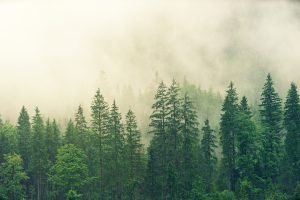
Some trees are easier to recognize without their leaves.
When you’re out on an icy winter hike, it may seem like there aren’t any indicators for being able to recognize the trees in your vicinity. As trees flaunt exposed branches, it’s easy to imagine that they’re not with the same ease to recognize as they are in autumnal season, when leaves can serve as the primary identification device.
In any event you can pinpoint the shape of the tree, its the twigs, buds and bark, with the help from a guide to the field, or possibly an app like iNaturalist You’ll soon become an expert in identifying trees during winter.
Shape
Find out more about the trees around you And you’ll shortly begin to master their unique shapes by swiftly going through them, sometimes some distances away. One method to decrease the number of species of trees is to first determine whether you are dealing with or is coniferous (keeps its needles throughout the year) as well as it is deciduous (loses it’s leaves at autumn).
Assuming that it’s deciduous. Note the shape the branches take on. Are they looser in a plane that is level from the storage compartment or do they move upwards? Does the structure of the tree bend effortlessly, like an American elm? Or is it bulky and thick like white debris?
Be aware that the direction the branches fill in may be affected by the conditions the branches are filling in (for instance, branches could spread out, if that the tree is located in an open space).
Check out the leaf’s course of action at the top of the twigs. Are buds (that will change into leaves in spring) are they arranged in inverse order or as substitutes?
Substitute courses of actions have one leaf per hub, and they rotate around the twig. A variety of tree families that have rotating leaves include poplar oak as well as hickory, birch beech, elm, and cherry.
Inverse plans typically have leaves paired at each hub. Tree families that have inverse courses of action include dogwood, debris and maple (aside from the appropriately called substitute leaved dogwood).
Buds
Based on the season depending on the season, buds may by the present have formed that will aid in identifying the species. If this is the case, take note of their size, shape and shape, as well as the variety and shape. Are they safe to claim that they’re or have they been textured? Do they have a the light fur? Are there any buds that are terminal (for instance, a bud towards the end of the twig)?
Trees with easily identifiable buds include oak (grouped buds that close) as well as bassewood (radiant bright red buds) and bitternut hickory (yellow) buds. One of the advantages of figuring out the best way to recognize buds is that they’re generally the same on old and young trees with similar species.
Certain trees can be identified by their bark and their variety. Cottonwoods are distinguished by their wrinkled bark white birch’s gleaming sparkle is a significant detail. A bark from a cherry tree from the eastern part of Canada is like scorched cornflakes.
Different tips
As you stroll through the trees, check at the ground or the branches to see if it has fallen any fruits, leaves or nuts. Sometimes, you may find them under the snow. They can also be important sources of information. In most cases the Winter ID can be a method of ending that can help you in canning down the species.
It is also important to understand the kinds of trees that are likely are likely to grow within your community’s forests. Remember that parks could include trees that aren’t local to the area, which may be harder to identify. Luckily, programs such as iNaturalist offer a growing number of winter visions. A good image of buds or bark can quickly help you recognize trees in the winter months of the year.
Which ones are not tacky? Which ones are that are shaped to look like boxing gloves? What can I do to find out what tree these green buds are in space with?
These were some of the questions that were acted out by the kids as we collected twigs to find evidence the evening before. We started to learn about trees last year , and as spring sprung, they were able to identify the matt, dark debris buds, gorgeous dogwood stems and beautiful bright red lime buds.
In this colder season we’ve started using the hand focal point to have a look at the scales of buds and hairs that aid with the identification of different species and move (in my daughter’s words) from the fledgling stage to the moderate!
Here is a selection of the most important species you might encounter during an icy winter walk along with a few of the drawings we made in our re-visitation of records our specimens:
Diffrent Types Of Trees

Field Maple
They are delicate and bristly. The white hairs can be clearly seen when you look at them from a hand focal point. They occur two-by-two on twigs and are usually on stalks that are short. We had to design the longest branch that has the snared edge to lower the buds of field maple the highest possible height so that we could view the buds clearly.
Debris
The most popular and identifiable by its velvet matt dark buds, reverse matches, and the transparent leaf scars under the buds. A stunning example to paint.
Dogwood
The ruddy twigs can be an excellent sign before you get to the buds, which are located along the branches in opposing matches. You could play out an amazing stunt using the leaves by carefully separating the lower and upper parts of the leaf while leaving the vascular strands alone in respect. The lower part of the leaf appears to drift through the air suspended by the simple strands.
Beech
Thin, long buds that tighten to a point that is flimsy, removed of the tree. Bud scales can be seen below the focal point of the hand.
Birch
Boxing glove shaped rose-colored buds that grew with a short stem sometimes with a tacky cover. The cone-shaped organic materials that hold tightly birch during the colder time of the year also assist in ID.
Horse Chestnut
Large, tacky buds with dark brown scales and distinctive horseshoe-shaped leaves under the buds. They are easily identified by their size and size contrasted with other buds.
Lime
Gruff with red buds that have been adjusted on red stems (in the latest development). Buds appear again on the stems. A typical road and parkland tree We have the lime hedge near by, with low branches perfect for gathering specimens.
Oak
A variety of earthy-colored buds that are identified a few feet away by a cluster of terminal buds that are towards the end of branches.

Leave a Reply